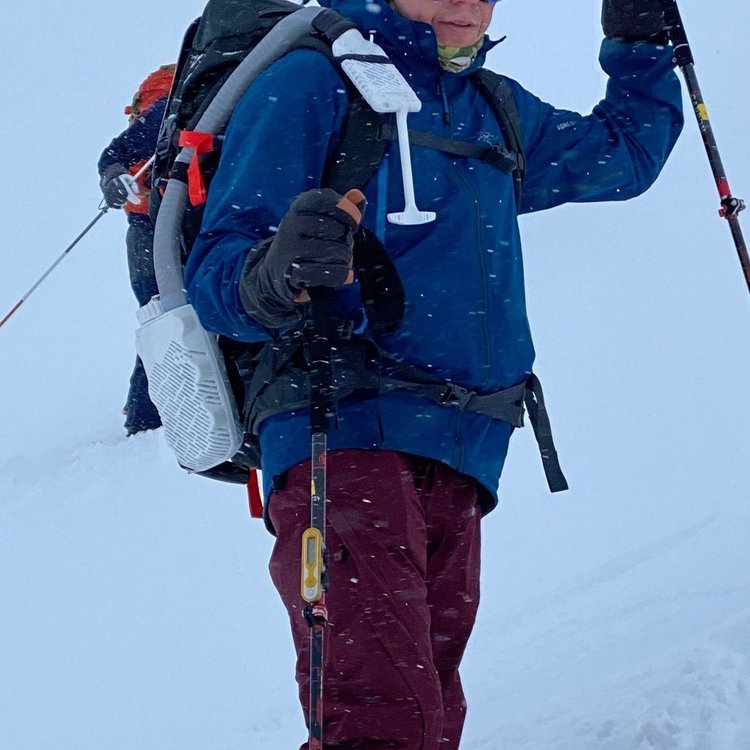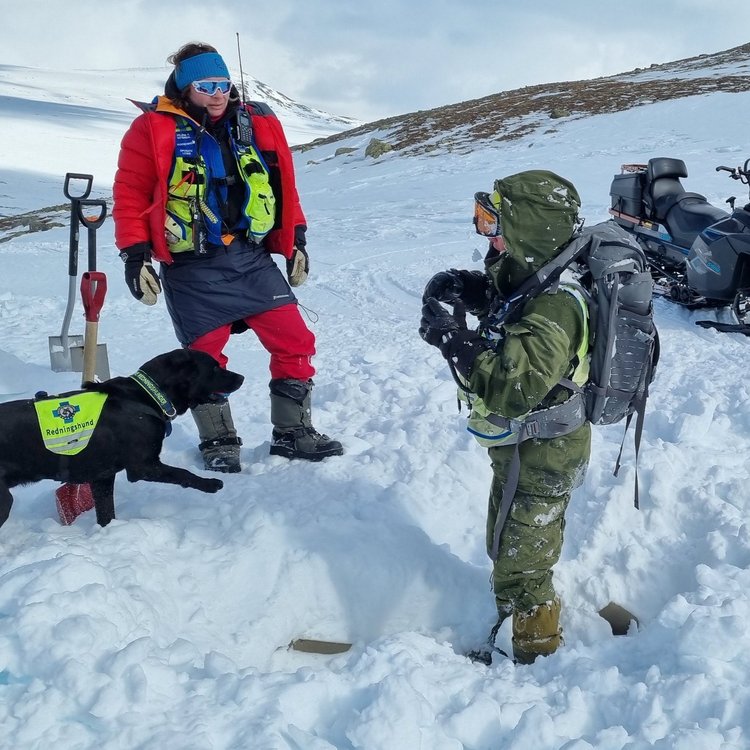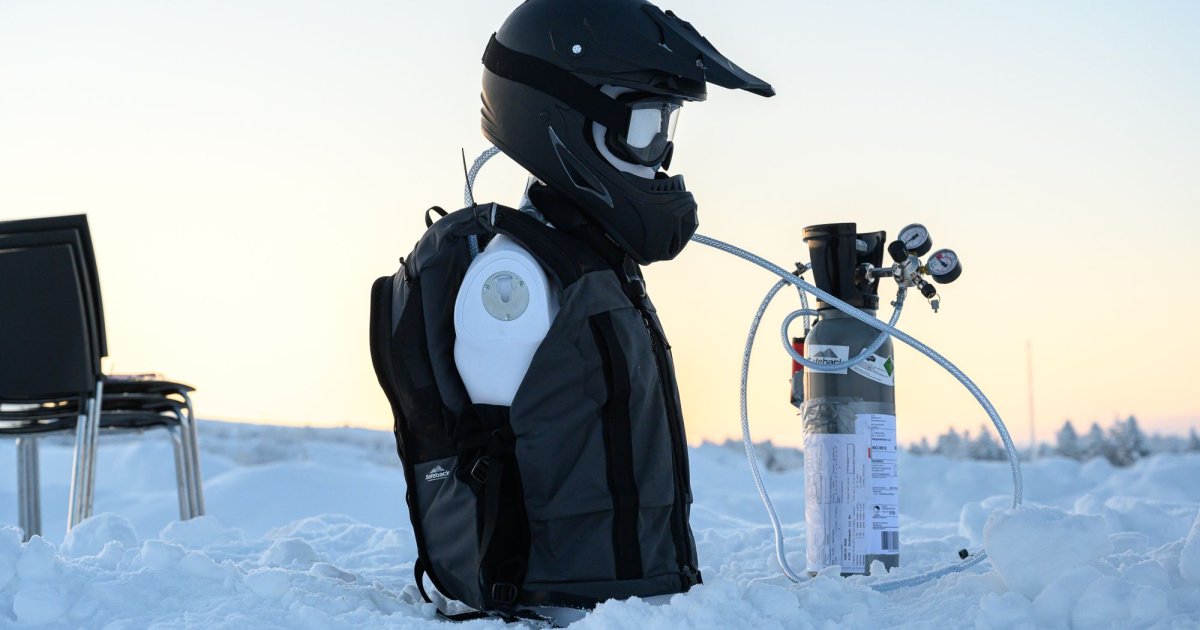Would love to see KLIM include this in their upcoming new avy pack releaseCome on Klim, u, peips, and, safeback....
Super pack
Sent from my SM-G998U using Tapatalk
Install the app
How to install the app on iOS
Follow along with the video below to see how to install our site as a web app on your home screen.
Note: This feature may not be available in some browsers.
Important The Safeback SBX Avalanche Survival System: A New Way to Survive
- Thread starter christopher
- Start date
The article states:
"...they future-proofed those activation handles, so they could easily be integrated with an avalanche airbag. Then, you’d only have to pull one cord, and two avalanche rescue systems would engage."
No word on whether that means integrating with existing systems or just newly developed, currently unreleased, avy pack systems that are specifically designed for it. I doubt they could integrate with every existing airbag design, but it would be cool to have an open standard for all manufacturers to allow for this type of addition later.
"...they future-proofed those activation handles, so they could easily be integrated with an avalanche airbag. Then, you’d only have to pull one cord, and two avalanche rescue systems would engage."
No word on whether that means integrating with existing systems or just newly developed, currently unreleased, avy pack systems that are specifically designed for it. I doubt they could integrate with every existing airbag design, but it would be cool to have an open standard for all manufacturers to allow for this type of addition later.
Hopefully it won't be long before we find out if any of the majors are going to make use of this or not.
If I can incorporate it into my BCA MtnPro vest with one pull activating both, I will buy one.
hoping the rumors are true that an all new BCA MtnPro Vest is coming out shortly.If I can incorporate it into my BCA MtnPro vest with one pull activating both, I will buy one.
I would have to see more info/studies on how this would translate into actually getting air into a person's breathing space, if there was any, before spending money on it.
I was just thinking the same thing as @boondocker97 - what's to ensure the air actually gets to you? Additionally, I like the concept, but I'd much prefer it be automatic somehow or another. There are just too many cases where somebody was wearing an airbag and wasn't able to deploy it in time. I'd think that would be relatively easy: set it up so it starts beeping after a couple minutes of detecting no motion, then starts pumping air if you don't hit a button to reset it. It'd have to be on your body, but I think you could make it work pretty easily: how often do you stand or sit perfectly still for that long? But once you're buried...
An airbag that inflates automatically would be nice too, but I bet it'd either be going off all the time, or wouldn't go off when you needed it. Like the stupid accident detection Apple came up with - was throwing out all kinds of false alarms when they activated the feature. Anyway, I won't be the first to buy one, but it's a great idea. Hopefully we'll see an integrated system with a "smarter" beacon, an air bag, and that provides air while not adding a bunch of extra weight or multiple handles to pull. Of course, no amount of tech will prevent the avalanche fatalities due to trauma, but a 70% chance of survival is better than 50 or 60. Whatever the case, we can't ever get away from education for those who will take risks. The only avalanche you have 100% chance of surviving is the one you avoid.
An airbag that inflates automatically would be nice too, but I bet it'd either be going off all the time, or wouldn't go off when you needed it. Like the stupid accident detection Apple came up with - was throwing out all kinds of false alarms when they activated the feature. Anyway, I won't be the first to buy one, but it's a great idea. Hopefully we'll see an integrated system with a "smarter" beacon, an air bag, and that provides air while not adding a bunch of extra weight or multiple handles to pull. Of course, no amount of tech will prevent the avalanche fatalities due to trauma, but a 70% chance of survival is better than 50 or 60. Whatever the case, we can't ever get away from education for those who will take risks. The only avalanche you have 100% chance of surviving is the one you avoid.
I read a study submitted by the Norwegian military who had field tested this.I would have to see more info/studies on how this would translate into actually getting air into a person's breathing space, if there was any, before spending money on it.
I will go see if I can get a copy of it.
Safeback | Avalanche Survival Gear
During the development of Safeback SBX, we have conducted field tests and participated in independent research in the following areas:
Usability and practicality in the field has been a key point of focus during the final stages our product development.
To make sure our product concepts work in practice, we’ve placed prototypes on the backs of backcountry guides, search and rescue professionals, and military personell working in avalanche environments.INTERNAL TESTING
As backcountry skiers and splitboarders ourselves, we have always taken prototypes out touring throughout the product development process. The product had to be something that we would want use in all conditions - from sidecountry missions from the resort to multi-day backcountry expeditions.Using the system ourselves has not only been a source of feedback internally, but also helped us to inform our hypotheses to give to external testers. This has made it easier for us to build larger-scale testing programs where we collect feedback more systematically in order to confirm or deny those hypotheses. Additionally, using the product heavily ourselves has made it easier to relate to product feedback and implement adjustments as needed.

Safeback CEO, Tor Berge, out on a backcountry tour in 2022 in his home zone in Western Norway.
MILITARY PERSONELL
From very early in our prototyping process, we have sent our systems out into the snow in the packs of the Norwegian military to get feedback about their usability and inform the next iteration of the product.The research and development collaboration with the Norwegian Armed Forces allowed us to work directly with their School for Winter Warfare, where soldiers are trained in winter combat techniques and spend long days with skis on their feet and packs on their back.
Their input has contributed to the evolution of the system to something which could be externally mounted onto any pack, to the final design where it is directly integrated into packs in order to be as practical as possible.

Norwegian soldier testing an very early prototype in the winter of 2019.
BACKCOUNTRY GUIDES AND INSTRUCTORS
Guides and avalanche instructors are true super-users of touring packs, often putting their equipment through more use in a couple of seasons than a recreational user might in a decade.We have worked directly with IFMGA certified mountain guides operating in Norwegian and global guiding companies for the last two years to put our product to the test. Practical testing of the Safeback SBX will continue with European and North-American IFMGA certified guides throughout the coming 22/23 winter season.
Based on their feedback, we have been able to adjust the placement of the SBX system in order to ensure that the system is as user-friendly as possible, while not disrupting their high packing needs when out with clients or courses. Guide feedback has also contributed to the optimization the product to be as compact and light as possible without risking performance.

IFMGA Guide and Owner of Romsdalen Lodge, Björn Kruse, sets a snow anchor for a rappel in Romsdalen in March, 2022
SEARCH AND RESCUE
Search and Rescue teams spend more time exposed to avalanche danger than most backcountry travelers due to the fact that they are often called into zones which an avalanche has already occurred.This system has been tested by members of the Norwegian Rescue Dog teams for input on the product’s usability, as well as to get input on the discussion of safety in the mountains.

In the field with a Norwegian Rescue Dog team in February, 2022
Norwegian Armed Forces
Safeback has a research and development collaboration with the Norwegian Armed Forces. The collaboration aims to ensure safety of the Norwegian soldiers when operating in areas where snow avalanches constitutes a risk.The following departments of the Armed Forces is contributing to the collaboration:
The Ministry of Defence is a Government Office with responsibility for the formation and implementation of Norwegian security and defence policy.
The Norwegian School of Winter Warfare (NSWW) is an international competence center specializing in cold weather operations. NSWW is the coordinating element of the NATO Center of Excellence for Cold Weather Operations (COE-CWO).
Norwegian Defence Research Establishment (FFI) is the prime institution responsible for defence-related research in Norway. The Establishment is the chief adviser on defence-related science and technology to the Ministry of Defence and the Norwegian Armed Forces' military organization.

Breathing Assistance in Deadly Avalanches
Safeback is the name of a newly developed breathing system. This Norwegian invention can extend the life of a person buried in an avalanche. FFI is a partner in its development.
 www.ffi.no
www.ffi.no
Good article. I thought this little snippet was important to note:
"It can only be effective for those with partly or fully open airways, and who still can breathe on their own."
"It can only be effective for those with partly or fully open airways, and who still can breathe on their own."
All the air in the world is WORTHLESS if your MOUTH and THROAT are packed with SNOW.Good article. I thought this little snippet was important to note:
"It can only be effective for those with partly or fully open airways, and who still can breathe on their own."
Similar threads
E
- Replies
- 4
- Views
- 2K
E
- Replies
- 6
- Views
- 2K
- Replies
- 43
- Views
- 14K
9

